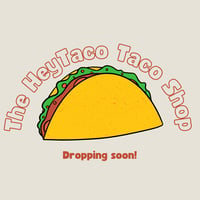Collaborative Rewards are a fantastic way to unite your team around a shared purpose. People on...
How to Price Rewards with Tacos
This is a million taco question! The value of a taco depends on each team and the strength of its Taco Economy. This is why we recommend waiting to add rewards until after a few months of using HeyTaco. Waiting to add rewards allows HeyTaco admins to see how many redeemable tacos people have accumulated and how engaged your team is, which allows you to price rewards accordingly.
Understanding the value of a taco is essential when setting up rewards in HeyTaco. A taco isn't just a currency—it's a symbol of appreciation that motivates and connects your team. However, assigning a taco-to-dollar valuation is delicate. The more redeemable tacos are in circulation, the less valuable each taco becomes, and that's an important factor to consider when pricing rewards.
Here's how to think about the value of a taco and how to price your rewards effectively.
Step 1: Understand the Emotional Value of a Taco
Before getting into numbers, remember why tacos matter. Each taco represents recognition for a job well done, teamwork, or brightening someone's day. The emotional impact of a taco is often greater than its monetary equivalent because it fosters connection, appreciation, and belonging.
Even if a taco is worth $1, its perceived value is much higher because it acknowledges effort and builds morale. Thus, tacos are a powerful tool for creating a culture of appreciation without requiring large investments.
Step 2: Set an Initial Taco-to-Dollar Valuation
When you introduce rewards, you'll need to decide how much each taco is worth in monetary terms. A starting point of $0.25 works well for most teams. This valuation helps balance the emotional and monetary value of tacos, keeping them meaningful while allowing for accessible rewards.
💡 Example: If you create a $10 gift card reward, you might set it to cost 40 tacos at $0.25 per taco.
Step 3: Monitor the Supply of Tacos
Here's where things get interesting: as more tacos circulate in your team, their perceived value may decrease. If tacos are too easy to earn or accumulate, the effort required to achieve a reward feels less significant.
To maintain a balance, ask yourself:
- How many tacos does the average person earn in a week or month?
- Are there any taco-giving patterns (e.g., overuse) that might inflate the supply?
If tacos are abundant, consider adjusting their monetary value by increasing the number of tacos needed to redeem rewards.
Step 4: Adjust Rewards Based on Taco Supply
If your team has a higher taco circulation, the valuation of a single taco can decrease. In this scenario, you might:
- Increase reward costs: If a $10 gift card initially costs 40 tacos, you could raise it to 50 or 60 tacos.
-
Add premium rewards: Offer higher-ticket rewards (e.g., 100 tacos for a $50 reward) to create aspirational goals and balance the taco economy.
💡 Example: A team with moderate taco-giving might use $0.50 to $1 per taco as the baseline. A team with frequent taco use might lower the value to $0.25 per taco, requiring 40 tacos for a $10 reward.
Step 5: Create Tiers to Sustain Value
Tiers are an excellent way to manage the taco economy while giving everyone something to aim for. They help balance the value of tacos at different earning and spending levels.
Example Tier System:
- Low-tier rewards (frequent, accessible): $5 coffee gift card = 20 tacos
- Mid-tier rewards (achievable, motivating): $25 meal delivery voucher = 100 tacos
- High-tier rewards (aspirational, less frequent): $100 team outing = 400 tacos
This system ensures that people who save their tacos feel rewarded, while those who want smaller rewards feel appreciated.
Step 6: Factor in Non-Monetary Rewards
Non-monetary rewards, like experiences, help sustain the taco economy while keeping the program fresh. These rewards don't devalue tacos because their impact is tied to fun or personal connection rather than financial cost.
Examples:
- Personalized shoutout: 5 tacos
- Choose the next team lunch location: 20 tacos
- Extra hour of PTO: 50 tacos
These rewards create a sense of value without adding to your budget, which helps prevent inflation in your taco economy.
Step 7: Monitor and Recalibrate Over Time
Taco valuation isn't static—it evolves as your team grows and adapts. Here's how to keep things in check:
- Track trends: Are tacos being redeemed too quickly or not at all? This can indicate overvaluation or undervaluation.
- Survey your team: Ask how they feel about reward options and adjust based on feedback.
- Reassess quarterly: Evaluate the taco economy every few months to ensure rewards remain meaningful and balanced.
💡 Tip: If you notice a surplus of tacos, introduce limited-time rewards or experiences to help regulate the supply and maintain their value.
Conclusion: A Taco's Value is What You Make It
The value of a taco isn't just about the dollars—it's about its impact on your team. By thoughtfully managing your taco economy, you can keep tacos meaningful while balancing your budget and reward system.
As more tacos circulate, their valuation may need to adjust, but with careful planning and regular recalibration, you'll maintain a recognition program that motivates, connects, and delights your team.










